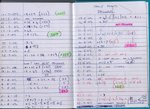turtle trader
Active member
- Messages
- 172
- Likes
- 6
The (in)ability to predict where a market is headed, and ensuring our trades have a suitable Risk:Reward ratio are 2 very well discussed topics on this board.
The consensus regarding market prediction seems to be that it is not possible to predict which way or by how far a market will travel, so we should not try to do so - just follow what the market is doing. Even more widely accepted is the principle of risk:reward ratios - the potential reward any 1 trade offers should be x times greater than the maximum loss we are going to potentially take on the trade.
I'm pretty comfortable with each of these ideas on their own, but am struggling to tie the 2 together:
It's easy to control the risk side of a trade, but if we really aren't forming an opinion on how far a market might go in our favour, how do we know what the potential reward is, and therefore how do we know that our R:R is suitable? When people say you can't predict where a market is going do they really mean 'I don't know which direction it'll go, but if it goes up then it'll go up by x points, so that's my potential reward'?
How do others view/manage these 2 seemingly contradictory principles - am I missing something fundamental here?
Turtle
The consensus regarding market prediction seems to be that it is not possible to predict which way or by how far a market will travel, so we should not try to do so - just follow what the market is doing. Even more widely accepted is the principle of risk:reward ratios - the potential reward any 1 trade offers should be x times greater than the maximum loss we are going to potentially take on the trade.
I'm pretty comfortable with each of these ideas on their own, but am struggling to tie the 2 together:
It's easy to control the risk side of a trade, but if we really aren't forming an opinion on how far a market might go in our favour, how do we know what the potential reward is, and therefore how do we know that our R:R is suitable? When people say you can't predict where a market is going do they really mean 'I don't know which direction it'll go, but if it goes up then it'll go up by x points, so that's my potential reward'?
How do others view/manage these 2 seemingly contradictory principles - am I missing something fundamental here?
Turtle

